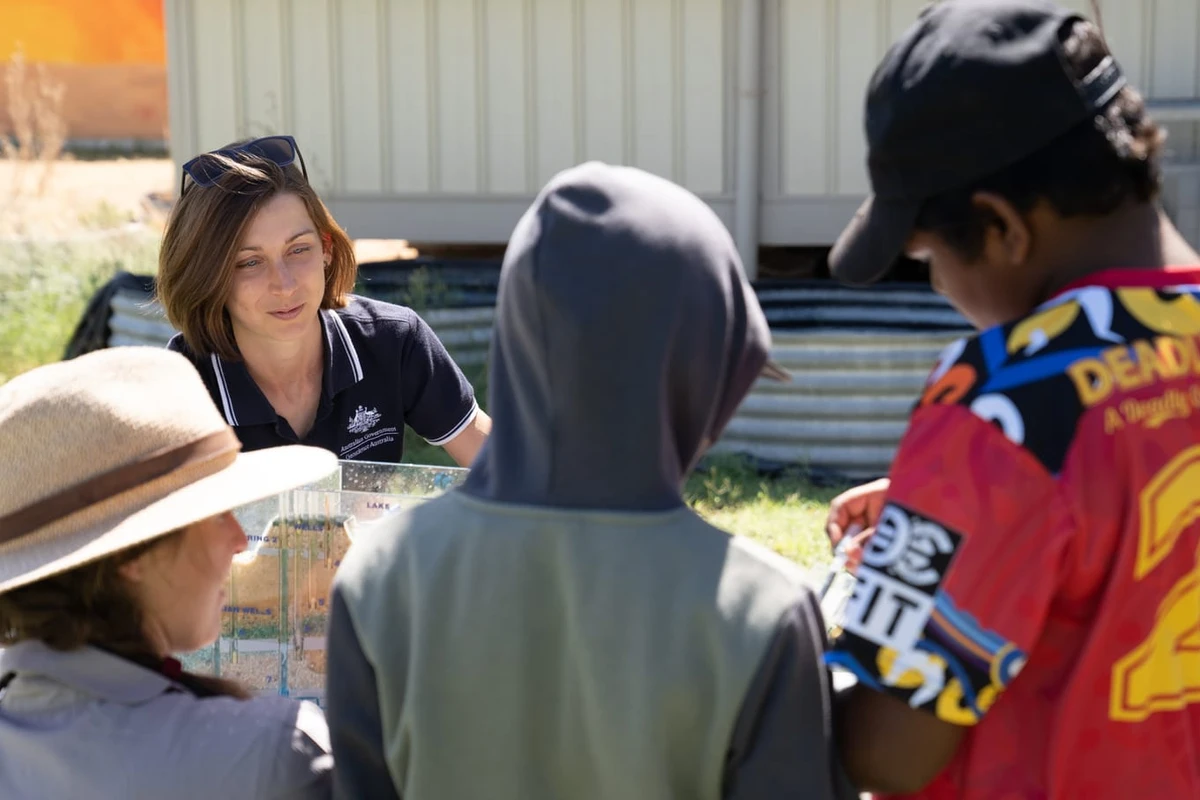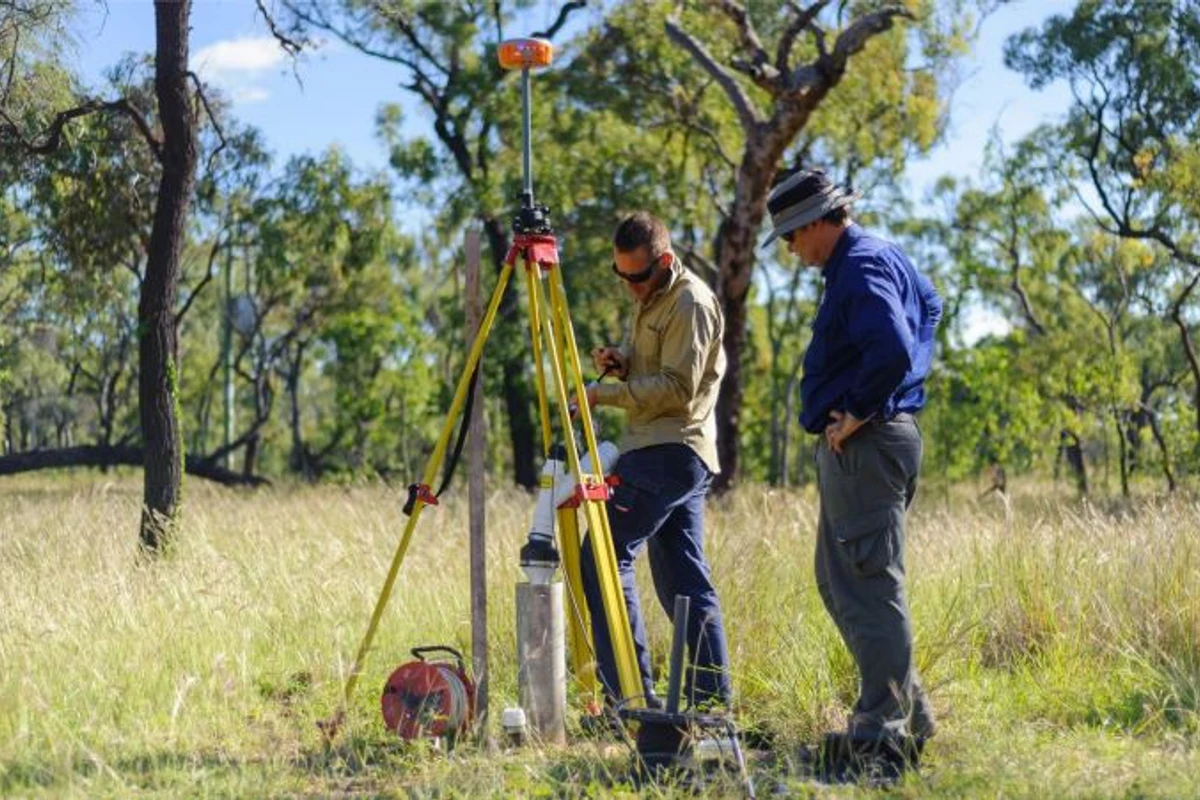Completed 2024 Australia's Future Energy Resources


These resources include conventional and unconventional hydrocarbons, natural hydrogen and, significantly, sediments, such as salts with the capacity to hydrogen.
As Australia transitions to net zero emissions, future energy resources must be developed responsibly, limiting greenhouse gas emissions while simultaneously guaranteeing secure energy supply.
Domestically produced natural gas has an important enabling role for Australia's manufacturing industry as a reliable and firming source of energy, including its capability for building sustainable renewable energy hubs.
The project supports the continued sustainable development of a strong and competitive hydrogen industry. Hydrogen can be produced by using either non-renewable or renewable energy sources. Hydrogen can also be produced by capturing natural hydrogen from geologically confined subsurface sources.
Hydrogen production, however, needs to be linked to hydrogen storage, especially if gas volumes are to be made available for export. Underground salt accumulations were identified as having optimal storage capabilities and the Australia's Future Energy Resources project mapped and evaluated salt occurrences within Australia's sedimentary basins.
As Australia moves to net zero and with strict limits being imposed on Australia's CO2 emissions by current and future energy producers from other sectors and industries, capture and storage of generated carbon dioxide in geologically suitable rock formations will be needed.
This project included studies to identify prospective regions for CO2 geological storage, including potentially unlocking large CO2 storage capacities. It also provides an insight into Australian hydrocarbon resource inventory and potential of near-depleted oil reservoirs, through utilising CO2 enhanced oil recovery (CO2-EOR) technique.
In addition, Australia's Future Energy Resources project compiled inventories on selected underexplored onshore sedimentary basins and provided a consolidated report on the current status of the geological and resource related knowledge of each basin.
Australia's Future Energy Resources project comprised 4 activities, which focused on a particular energy resource or energy-related commodities, including natural gas, crude oil, hydrogen and opportunities for geological storage of CO2.
The Energy Resources Assessment work evaluated the prospectivity of energy resources in central Australia, namely the Pedirka and western Eromanga basins. The Pedirka and Eromanga basins were selected due to their underexplored status and their proximity to oil and gas infrastructure in the Cooper and Amadeus basins.
The Energy Resources Assessment work provides guidance for possible future investment in resource development through an improved understanding of the energy resource availability in the underexplored regions of the Pedirka and western Eromanga basins. It produced spatially enabled assessments, highlighting the relative prospectivity and areas of interest for potential future exploration, including assessments relating to conventional and unconventional petroleum resources, CO2 geological storage and green hydrogen projects.
For more information, please visit the Energy Resources Assessment page.
Hydrogen studies aimed to understand Australia's underground hydrogen storage potential, estimate natural (geological) hydrogen resources and develop tools, such as the Hydrogen Economic Fairways Tool (HEFT), to aid decision-makers in the hydrogen sector.
Practical hydrogen storage options are a key unknown in the establishment of a new hydrogen export industry, with salt storage being the ideal storage option. New remote sensing salt prospecting techniques were tested in collaboration with other Exploring for the Future projects and states and territories. In the absence of practical salt storage options, depleted gas reservoirs or even mined rock caverns may be required.
Developed in collaboration with the Monash University, the Hydrogen Economic Fairways Tool (HEFT) helps identify prospective hydrogen production regions and zones, enabling decision makers, planners and investors to identify the most optimal regions to establish hydrogen production hubs.
For more information, please visit the Hydrogen studies page.
Geoscience Australia, in collaboration with CSIRO, conducted a 4-year study to investigate the potential for CO2 storage and CO2 enhanced oil recovery (CO2-EOR) in residual oil zones (ROZ) in Australia.
Development of ROZ could be economically beneficial, help to address greenhouse gas emissions, and provide increased energy security through the production of new domestic oil resources.
For more information, please visit the Carbon (CO2) Storage in Residual Oil Zones page.
The Onshore Basin Inventories study promotes exploration and investment in selected underexplored or frontier onshore basins by providing overviews of the current state of geological knowledge within each basin.
Onshore basin inventory reports contain whole-of-basin summaries of the petroleum geology, petroleum systems, hydrocarbon prospectivity, exploration history and status, data availability and quality, critical risks and exploration issues as they relate to both conventional and unconventional hydrocarbons. They provide a single point of reference and build on previous basin inventories, thereby creating a standardised national inventory of onshore sedimentary basins.
The reports identify key exploration uncertainties and list relevant questions that may help inform future work program planning and assist in decision making for both government and industry organisations. These reports are supported by selected value-add products that aim to address identified data gaps and evolve regional understanding of basin evolution and prospectivity.
Petroleum system modelling was undertaken in selected basins to highlight the oil and gas potential in underexplored provinces. Seismic reprocessing and regional geochemical studies were conducted to increase the value of existing datasets. The inventories are supported by the ongoing development of the nationwide source rock and fluid atlas, available through the Geoscience Australia's Exploring for the Future Data Discovery Portal, which improves the veracity of petroleum system modelling in Australian onshore basins.
Australia's Future Energy Resources project produced a set of comprehensive geoscientific reports, providing new information and integrated datasets that address exploration uncertainties and can support industry stakeholders in their investment decisions. These products assist government with the formulation of future energy strategies, including Australia's path to a low carbon economy.
Publications, interpretations and new data collected throughout the project are publicly available through the Exploring for the Future website and Geoscience Australia's Exploring for the Future Data Discovery Portal.
Geoscience Australia acknowledges all landholders and communities who support our work in rural, regional and remote Australia.

Geoscience Australia is committed to land, air and marine access best practice and to protecting cultural heritage and the environment.
We thank the people and communities who collaborate with us to ensure the success of the Exploring for the Future program.
Geoscience Australia activities are not undertaken on behalf of any exploration company; we work for the benefit of all Australians.
All data produced by Geoscience Australia, including the data from this project, is publicly available after quality assurance has been performed.
For more information or general enquiries, please email clientservices@ga.gov.au

The Exploring for the Future program (2020-24) focused on 8 interrelated projects, united in growing our understanding of Australia's geology.
Deep-dive
Three deep-dive projects in potentially resource-rich corridors identified in the east and west of Australia: Darling-Curnamona-Delamerian, Officer-Musgrave-Birrindudu and Barkly-Isa-Georgetown projects.
National
Three national projects with a focus on southern Australia: Australia's Resources Framework, National Groundwater Systems and Australia's Future Energy Resources projects.
Program support
Two program support projects: Enhanced Data Delivery and Geoscience Knowledge Sharing projects.